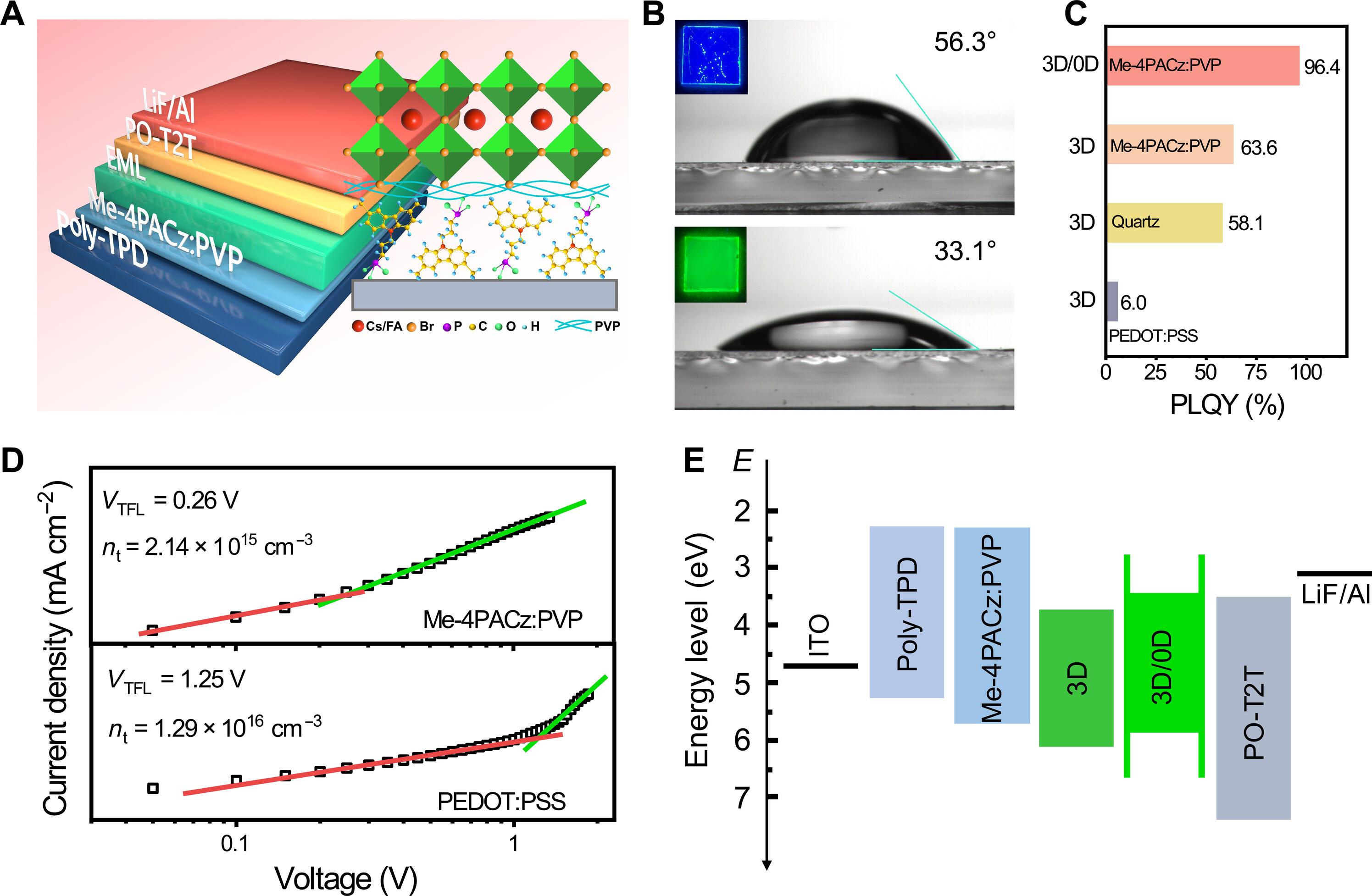Ultralow voltage–driven efficient and stable perovskite light-emitting diodes
IF 11.7
1区 综合性期刊
Q1 MULTIDISCIPLINARY SCIENCES
引用次数: 0
Abstract
The poor operational stability of perovskite light-emitting diodes (PeLEDs) remains a major obstacle to their commercial application. Achieving high brightness and quantum efficiency at low driving voltages, thus effectively reducing heat accumulation, is key to enhancing the operational lifetime of PeLEDs. Here, we present a breakthrough, attaining a record-low driving voltage while maintaining high brightness and efficiency. By thoroughly suppressing interface recombination and ensuring excellent charge transport, our PeLEDs, with an emission peak at 515 nanometers, achieve a maximum brightness of 90,295 candelas per square meter and a peak external quantum efficiency of 27.8% with an ultralow turn-on voltage of 1.7 volts (~70% bandgap voltage). Notably, Joule heat is nearly negligible at these low driving voltages, substantially extending the operational lifetime to 7691.1 hours. Our optimized strategies effectively tackle stability issue through thermal management, paving the way for highly stable PeLEDs.

超低电压驱动高效稳定的过氧化物发光二极管。
过氧化物发光二极管(PeLED)的工作稳定性较差,这仍然是其商业应用的主要障碍。在低驱动电压下实现高亮度和量子效率,从而有效减少热量积累,是提高 PeLED 工作寿命的关键。在此,我们取得了突破性进展,在保持高亮度和高效率的同时,实现了创纪录的低驱动电压。通过彻底抑制界面重组并确保出色的电荷传输,我们的珀尔LED 的发射峰值为 515 纳米,在 1.7 伏特的超低开启电压(约 70% 带隙电压)下,最大亮度可达每平方米 90,295 烛光,外部量子效率峰值为 27.8%。值得注意的是,在这些低驱动电压下,焦耳热几乎可以忽略不计,从而将工作寿命大幅延长至 7691.1 小时。我们的优化策略通过热管理有效地解决了稳定性问题,为实现高度稳定的 PeLED 铺平了道路。
本文章由计算机程序翻译,如有差异,请以英文原文为准。
求助全文
约1分钟内获得全文
求助全文
来源期刊

Science Advances
综合性期刊-综合性期刊
CiteScore
21.40
自引率
1.50%
发文量
1937
审稿时长
29 weeks
期刊介绍:
Science Advances, an open-access journal by AAAS, publishes impactful research in diverse scientific areas. It aims for fair, fast, and expert peer review, providing freely accessible research to readers. Led by distinguished scientists, the journal supports AAAS's mission by extending Science magazine's capacity to identify and promote significant advances. Evolving digital publishing technologies play a crucial role in advancing AAAS's global mission for science communication and benefitting humankind.
 求助内容:
求助内容: 应助结果提醒方式:
应助结果提醒方式:


